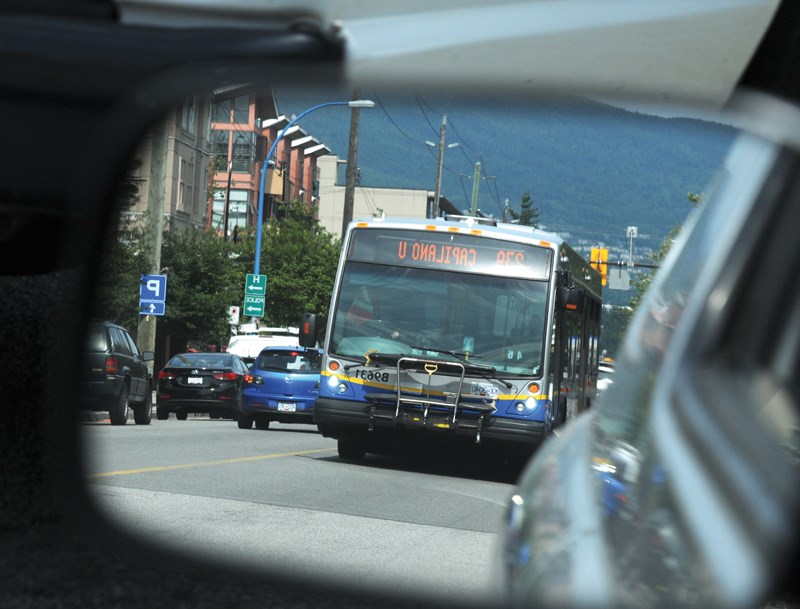If you feel like you’ve been slowing down in the last five years, it might just be your bus.
Approximately 80 per cent of bus routes are slower today than they were in 2014, according to TransLink media relations advisor Lida Paslar.
That frigid molasses feeling was most evident on the North Shore for passengers taking the 230 from Upper Lonsdale to Lonsdale Quay. The bus clocked in at an average speed of 14.7 km/h for 2018, making it one of the slowest five buses out of TransLink’s 217 routes, according to TransLink’s recently released 2018 Transit Service Performance Review.
Ridership on the 230 trickled down from a high of 1,024,000 in 2015 to 913,000 passengers in 2018. The route’s cost ticked up from $1,655,000 in 2015 to $1,746,000 for last year.
However, the route was still in TransLink’s top quarter in terms of cost efficiency, with a budget that works out to $1.91 per rider.
Adjusting transit schedules to deal with traffic adds to TransLink’s costs, Paslar stated in an email. TransLink has no data directly connecting slower speeds to decreasing ridership, she added.
“Generally speaking, we have seen an increase in ridership on the North Shore,” she stated, noting a 3.3 per cent bump in annual bus boardings.
Slumping speeds were a common theme among North Shore routes.
The 227 Lynn Valley Centre to Phibbs Exchange has gotten nearly 12 per cent more sluggish in the last five years, slowing from 27.7 km/h in 2014 to 24.4 km/h last year.
The 603,000 riders who rode the 236 from Grouse Mountain to Lonsdale Quay also got plenty of time to enjoy the view as the pace dipped from 24.3 to 21.4 km/h from 2014 to 2018.
Faster, cheaper and less cost efficient was the 259 bus from Lions Bay to Horseshoe Bay, which boasted a cost per boarding of $13.84. That ratio makes the 259 the third-least efficient route in TransLink’s network. However, with an operating cost of just $42,000, the 259 was also the fourth least expensive TransLink route in 2018.
At an average speed of 49 km/h, the 259 was also the third fastest bus in TransLink’s fleet.
The 262 from Lions Bay to Caulfeild is similarly fast and inefficient, with a cost per boarding of $8.64 for a cost-efficiency ranking of 205 out of 217 routes..
The 262 mini-bus carried approximately 38,000 passengers in 2018, navigating the 18-kilometre route at a speed of 47.7 km/h.
Joining the 262 in the bottom sixth of TransLink routes in terms of cost efficiency is the 252 from Inglewood to Park Royal, which has a cost per rider of $6.59, and – with a cost of $6.01 per rider – the 258 from West Vancouver to UBC.
Despite its high operating cost, the SeaBus is still the best transit value on the North Shore.
Approximately 6.6 million passengers rode the SeaBus in 2018, up 11 per cent from 2014.
Given the operating budget of $9.615 million, the cost per rider works out to $1.45.



